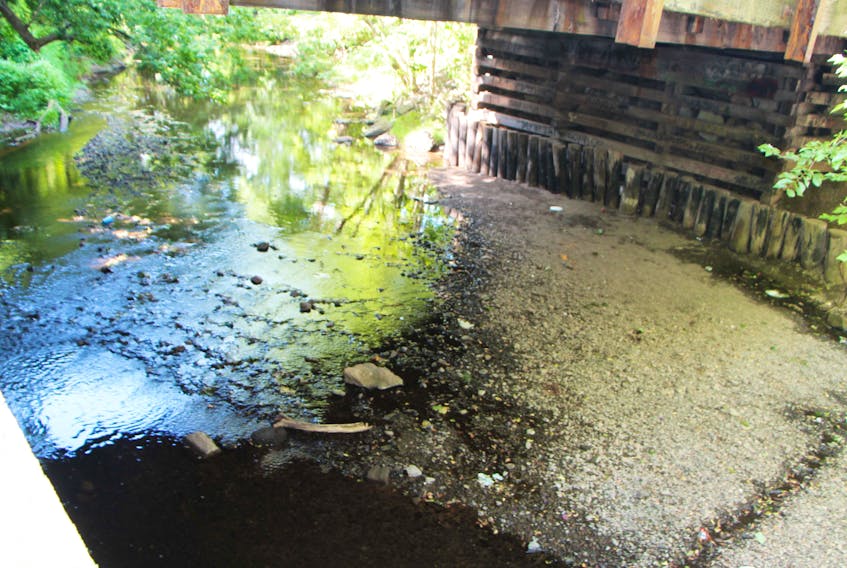ANTIGONISH, N.S. - If you are thinking about watering your lawn in Antigonish, don’t.
Also, don’t wash your car.
At least, not until the town gets a couple days of rain.
“We’re starting with a voluntary request and will move on from there depending on what the weather brings,” Ken Proctor, engineer for the Town of Antigonish, said.
The town has placed advertisements in the Casket and local radio stations asking residents to conserve water.
The town gets its water from behind a dam that extends across the James River seven kilometres outside of its borders.
When all is well water spills over the top of the dam.
As of Thursday the water was a metre below the top of the dam and dropping.
“This is the worst dry spell we’ve had since 2006,” Proctor said.
According to Saltwire meteorologist Cindy Day, Proctor’s water woes can be blamed on a heat dome.
The large dome of hot air has been held over Atlantic Canada all summer by a jet stream whose course has been farther north than usual. That dome of heat has prevented the normal track of weather systems through the area.
“If you want to look back at 2018 a decade ago to remember that hot dry summer, you’ll have a hard time seeing it in the records,” Day said.
The average annual rainfall for the meteorological summer – June, July and August – is 288 millimeters.
On the books northern Nova Scotia had 260 mm.
However, half that was in June and the lions’ share of what remained – 85 mm – fell in one rain storm.
So while the numbers may look nearly normal, the effect has been bad for both wells and surface water supplies like the one relied upon by Antigonish.
Proctor explained that a smaller amount of snow last winter mean when that much of the spring rainfalls were sucked up by the thirsty ground. While June was good, most that water travelled through watersheds to the ocean.
And that big 85 mm rainfall wasn’t much help at all.
“What you need is a nice slow soaking,” Proctor said.
But there is hope on the horizon.
“What we’re seeing now is the jet stream is starting to sag and we’ll once again get weather systems moving through,” Day said.
That could mean rainy days ahead as we move into fall.
It also means Proctor might let you water your lawn again before the snow flies.









